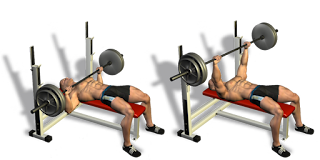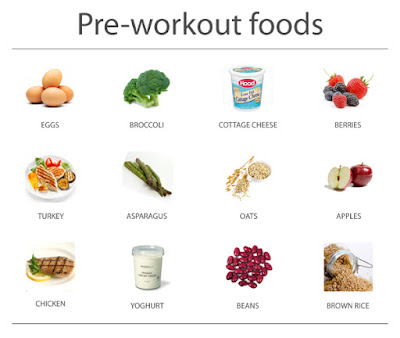by Baxter and Nina
So, you’re lying on a beautiful beach somewhere, feeling the warmth of the sun on your skin and listening to the sound of waves lapping at the shore, and you’re feeling totally comfortable and very relaxed. So what is happening to you? Is this the relaxation response? The rest and digest state? Conscious relaxation? Or what?
Parasympathetic Nervous System. This system is responsible for nourishing, restoring, and healing your body and mind. As you move through your day, whether you are totally relaxed, slightly active, or even very active, your parasympathetic nervous system stimulates digestion, activates various metabolic processes, and keeps your immune system turned on. (These functions will only be turned off temporarily when you’re in a Fight or Flight state.)
When you are physically still and your mind is quiet, your parasympathetic system functions optimally, allowing you to enter the Rest and Digest state. Being in the Rest and Digest state is normal and very desirable, as it gives your body and mind time to relax completely and recover from stressful periods. There’s probably no downside to spending a lot of time in this state, except you probably wouldn’t get very much done!
On an average good day, when you’re feeling rested and cheerful, and are involved in normal work and social activities, your sympathetic and parasympathetic systems work together to keep you in balance, allowing you to be both fully functional and stay healthy. A well-balanced yoga practice, including both physical exercise and stress management practices, will help you maintain this balance when there are minor challenges in your life. It is only when you spend too much time with an overactive sympathetic nervous system due to ongoing stressful life circumstances that you can become out of balance. At this point, it’s very important to take steps to reduce your chronic stress and bring yourself back into balance again, as chronic stress is harmful to your physical, emotional, and mental health (see About Stress: Acute Versus Chronic). And conscious relaxation with yoga is the way!
 |
| Mirror Image by Melina Meza |
Another time you’re sitting alone in your house, meditating on your breath. Your knee hurts a bit. Your thoughts seem wild, and you feel fidgety and restless. But you keep coming back to your breath, and after several minutes your mind begins to settle and quiet. What’s happening to you now? And how is this different than being on the beach?
Or, let’s say one night you’re driving your car down a dark, winding road through a forest when suddenly a deer bolts into the road. Your heart begins to pound and your breath speeds up as you quickly try to take evasive action. Is this the stress response? The Fight or Flight response? On another night, you’re meeting someone you’ve just started dating. When you spot them on the street coming toward you, your heart begins to pound and your breath speeds up. It feels kind of like stress, but in a good way—you know, exciting. What’s going on there?
As we have been delving into the topics of stress and relaxation, we’ve found there’s some confusing terminology out there in the literature and even here on our own blog! So it seems like a good idea to try and define once and for all some of terms that have been most commonly bantered about. To start, let’s take a look at the following terms to get clearer on what they mean:
- Stress Response
- Fight or Flight State
- Relaxation Response
- Rest and Digest State
- Conscious Relaxation
Stress Response. This term describes the response of your mind and body response of your mind and body when you are faced with a challenge. Sometimes the response is to a real or perceived threat, ranging from serious life or death situations to stressful situations like doing your taxes or getting lost. Other times the response is to a positive challenge, such as running a race, falling in love, brainstorming ideas, or creating a work of art. The stress response increases the activity of your sympathetic nervous system, speeding up your heart and breath rates, and dilating your pupils to get you ready for action. When the stress response is at its extreme, you shift into the Flight or Fight State.
Fight or Flight State. This term describes the state of your nervous system when your sympathetic system is fully operational, and generally you actually are in danger, threatened, or think you are in danger. For example, if you are about to get into a car accident, your nervous system sends quick signals to your adrenal glands to release adrenalin, unleashing a rapid physical response evolved to get you to safety. (See below for details.)
Relaxation Response. This term describes the response of your mind and body to safe circumstances or a secure environment, causing your heart and breath rate to slow, your blood pressure to drop, your energy usage to slow and your digestion and immune systems to turn on. In our above example, if you successfully avoided the car crash, once you got home and had some time to decompress, your system would slowly shift to the relaxation response. The relaxation response increases the activity of your parasympathetic nervous system, and enters you into the Rest and Digest state.
You can trigger the relaxation response through conscious relaxation techniques or just by ordinary resting and relaxing while you are awake, such as by listening to calming music on your couch or by lying on a beach feeling the sun on your skin and listening to the waves. (This is in contrast to activities that are distracting rather than relaxing. For example, while TV distracts us from our real-life concerns, it is not actually relaxing your nervous system because the action you’re watching is typically very stimulating—as anyone who tries to go to bed after a scary movie or violent show soon realizes.)
Rest and Digest State. This term describes the state of your nervous system when your parasympathetic system is fully operational, you are mentally and physically relaxed, your body’s vital signs are in their calm state, and the immune, repair, and digestive systems are up and operating. You enter this state naturally when relaxing at home or out in nature, or when you use conscious relaxation to trigger the relaxation response.
Conscious Relaxation. This term describes any technique that triggers the relaxation response, including meditation, breath practices that are calming, guided relaxation practices, and even gentle and restorative yoga asana practiced mindfully. Keep in mind that this describes an active practice technique with a desired goal. But the awesome thing about conscious relaxation is that you can use it anytime and anywhere. You don’t need to fly to Hawaii. And although a quiet peaceful environment is helpful, you can even meditate or do breath practices in challenging environments. (See 6 Ways to Bust Stress with Yoga).
The Healthy Balance of Stress and Relaxation
So let’s say you’re sitting outside in the garden talking with a friend, and you’re feeling very comfortable and relaxed. Then your friend tells you about an interesting idea he has, and you suddenly perk up a bit. You then pitch in with an idea of your own, and that leads to very animated discussion. What’s happening here? Are you relaxed or stressed? Or, is it possible that you are both at the same?
Ding, ding, ding! Yes, it’s both at the same time. As we described in Chapter x, your autonomic nervous system, which controls background processes that keep your body alive and healthy, such breathing, maintaining normal temperature, and adjusting blood pressure to match activity, is divided into two subsystems: your sympathetic nervous system and your parasympathetic nervous system. And these two subsystems work together in tandem, providing you with a healthy balance of activity and relaxation.
Sympathetic Nervous System. This system stimulates you when you need to be active. The activity can be as basic as getting out of bed in the morning, writing an email, or practicing gentle yoga poses, something more challenging such as running a race or giving a public talk, or something really drastic such as trying to avoid a car accident.
Ding, ding, ding! Yes, it’s both at the same time. As we described in Chapter x, your autonomic nervous system, which controls background processes that keep your body alive and healthy, such breathing, maintaining normal temperature, and adjusting blood pressure to match activity, is divided into two subsystems: your sympathetic nervous system and your parasympathetic nervous system. And these two subsystems work together in tandem, providing you with a healthy balance of activity and relaxation.
Sympathetic Nervous System. This system stimulates you when you need to be active. The activity can be as basic as getting out of bed in the morning, writing an email, or practicing gentle yoga poses, something more challenging such as running a race or giving a public talk, or something really drastic such as trying to avoid a car accident.
Your sympathetic nervous system prepares your body and mind for action by stimulating your heart to beat faster and stronger and slightly raising your blood pressure to improve blood flow, by opening your airways so you can breathe more easily, and by stimulating your thought processes so you can assess your situation and think more quickly.
In extreme situations—where serious action on your part is needed—your sympathetic nervous system triggers the Fight or Flight response, as described above. In this state, your sympathetic nervous system actually turns off the background functions of nourishment, restoration, and healing that are provided by the parasympathetic nervous system because these functions will slow you down. Being in the Fight or Flight state is normal and healthy as long as it doesn’t happen too frequently or continue for a long period of time, when it becomes chronic stress (see see About Stress: Acute Versus Chronic).
Parasympathetic Nervous System. This system is responsible for nourishing, restoring, and healing your body and mind. As you move through your day, whether you are totally relaxed, slightly active, or even very active, your parasympathetic nervous system stimulates digestion, activates various metabolic processes, and keeps your immune system turned on. (These functions will only be turned off temporarily when you’re in a Fight or Flight state.)
When you are physically still and your mind is quiet, your parasympathetic system functions optimally, allowing you to enter the Rest and Digest state. Being in the Rest and Digest state is normal and very desirable, as it gives your body and mind time to relax completely and recover from stressful periods. There’s probably no downside to spending a lot of time in this state, except you probably wouldn’t get very much done!
On an average good day, when you’re feeling rested and cheerful, and are involved in normal work and social activities, your sympathetic and parasympathetic systems work together to keep you in balance, allowing you to be both fully functional and stay healthy. A well-balanced yoga practice, including both physical exercise and stress management practices, will help you maintain this balance when there are minor challenges in your life. It is only when you spend too much time with an overactive sympathetic nervous system due to ongoing stressful life circumstances that you can become out of balance. At this point, it’s very important to take steps to reduce your chronic stress and bring yourself back into balance again, as chronic stress is harmful to your physical, emotional, and mental health (see About Stress: Acute Versus Chronic). And conscious relaxation with yoga is the way!
Subscribe to Yoga for Healthy Aging by Email ° Follow Yoga for Healthy Aging on Facebook ° Join this site with Google Friend Connect




































